As we came back to California to spend some quality time with family and friends, we decided to chase the rare superbloom which typically occurs once every 10 years or so. Due to a persistent drought in California, this year’s was particularly abundant which made for a unique and wonderful show we did not want to miss.
In this post, we are sharing our itinerary as well as how much we spent! If you are in California and haven’t seen the superbloom, you still have a couple of weeks to catch up before it starts fading away!
How much time do you need to spend to see the superbloom?
We recommend a minimum of two days to get a sense of this unique event. Ideally more if you can afford to take the time off. For us, because we were driving from San Francisco, we decided to take six days including a weekend.
What did we do?
We mostly visited popular sites or parks where we could see the superbloom. We looked up in advance on the Wild Flower Hotline the wildflower report on the best sites that were in peak bloom. I suggest you do the same because by the time you read this, there may be different parks in peak bloom.
Here is the daily summary of our weekend:
| Day | What did we do? |
| 1 (Wednesday) | We left San Francisco early and drove towards Carrizo Plain National Monument. We then stayed the night at Buttonwillow, CA. Total driving: 320 miles, 6 hours. |
| 2 (Thursday) | For our second day we stopped by Antelope Valley Poppy Reserve, enjoyed an AYCE Sushi stop in the mid afternoon and kept driving south-east to stay at North Hills, CA Total driving: 150 miles, 2.5 hours. |
| 3 (Friday) | For our third day, we started by exploring Diamond Valley Lake and then went to Joshua National Park for an afternoon hike near the south Entrance. We then drove to Indio, CA where we stayed for 2 nights. Total driving: 250 miles, 4.5 hours. |
| 4 (Saturday) | For our fourth day, we spend an entire day in the center of the Joshua National Park. Total driving: 145 miles, 3 hours. |
| 5 (Sunday) | For our firth day, we hiked at Black Rock campground, near the North entrance of Joshua National Park and then stayed in Ontario, CA. Total driving: 140 miles, 2.5 hours. |
| 6 (Monday) | For our last day, we made a stop by the Chino Hills State Park before driving all the way back to San Francisco. Total driving: 440 miles, 7 hours. |
Trip miles total: 1,445 miles, 25.5 hours
The map below captures all the sites we’ve stopped at as well as the place we stayed at
Day 1 – Carrizo Plain National Monument

On our first day, we had an early start since we had to drive for 4.5 hours to reach Carrizo Plain National Monument (from San Francisco). After taking a stretching break at the quiet town of Paso Robles, we stopped on the side of the road for lunch to enjoy our first sight of the superbloom by parking on Shell Creek Road (at the intersection with Highway 58).
We then entered Carrizo Plain National Monument and stopped at Soda Lake where we climbed a small hill to get a gorgeous panoramic view of the lake and the surrounding area. We then took a short trail to walk near the lake and observe the saline deposits that were mined by the nearby cattle ranches as salt licks or for preserving meat.
Cost to access the site: FREE.
We then drove to our accommodation in Buttonwillow and enjoyed some mexican food at the nearby Elsy’s Antojitos food truck that has wonderful menudo and some great quesadillas.
Total driving: 320 miles, 6 hours.
Day 2 – Antelope Valley Poppy Reserve
For our second day we drove to Antelope Valley Poppy Reserve and spent 3 hours for an amazing treat of millions of poppies! Besides the poppies we were able to find a few Rancher’s Fiddleneck (yellow) and Caterpillar Phacelia (purple). This ended up being our favorite spot because of the large scale of beauty, check out the photos!
Cost to access the site: $10 per vehicle, FREE if you walk-in. (Pro-tip: you can find parking on the main road which is about half a mile from the park entrance if the line to get in is too long).
For lunch, we stopped by Harbour Sushi that was featuring an All You Can Eat (AYCE) Sushi menu for less than $30 per person + tax/tip. (If you have been following us in other destination reports, you know that we are huge fans of sushi and AYCE sushi in particular!) The menu selection is pretty impressive, with 40 premium rolls (6pc ea), 20 sushi (2pc ea), 15 rolls (6pc ea) and 16 appetizers options. Pro-tip: skip breakfast to fully enjoy the menu & arrive before 2:30pm so you won’t get charged the AYCE dinner menu price which is more expensive.
We then drove to North Hills where our accomodation was, enjoyed a swim in the pool to cool down and got to bed early.
Total driving: 150 miles, 2.5 hours.
Day 3 – Diamond Valley Lake + Joshua Tree National Park (South)
For our third day, we started by paying a visit to the wildflowers of Diamond Valley Lake which featured sixteen variety of wildflowers. This was another high point of our journey because it was an unexpected gem, the scenery was beautiful with lake in the backdrop and the variety of wildflowers was very impressive.
Cost to access the site: $10 for parking and $3 per person for trail access.
After such a treat, we drove to the south entrance of Joshua Tree National Park. Our first stop was along the road as we spotted our first superbloom. The residents of Joshua Tree say that it is the most wildflowers they have seen in this desert in about 40 years! We were experiencing a rare site to see so much color amongst the typically brown and dry desert. We then paid our park entrance fee before driving to Cottonwood Spring campground where we had our packed lunch. With yummy food in our tummies we then started a 3 mile hike to see the park from the top of Mastodon peak (trail map), which was another treat.
Cost to access the site: $30 per vehicle (valid for a 7 days) or $15 per person. If you plan to visit more National Parks through the year, we highly encourage that you pay $80 instead and get the Beautiful National Parks and Federal Recreational Lands Annual Pass. The annual Joshua Tree National Park cost $55 but only gives you access to Joshua Tree National Park.
We then drove to Indio where our accommodation for the weekend was. We did some groceries since we had a kitchenette and enjoy a dinner at home. Accommodation is a bit tricky at Joshua Tree National Park because camping is almost always full unless you booked well in advance. The Airbnb options are fairly limited and the motels in the surrounding cities are not the greatest and still require a fair amount of driving to get to the park. We decided on Indio because we wanted a place with kitchen access and knew we would be spending most of our time at the south entrance where the superbloom was the strongest.
Total driving: 250 miles, 4.5 hours.
Day 4 – Joshua Tree National Park (Center)
For our fourth day, we kept exploring Joshua Tree National Park by starting our day with a hike that lead us to the top of the Ryan Mountain (trail map). This 3 miles hike is said to be one of the most popular in the park and was one of the first where we were able able to spot Joshua Trees.
We then drove to the Split Rock picnic area where we enjoyed our lunch. From there, we then wandered through some of the massive blocks that felt like they were put there by giants (They were the results of a complex geologic formation that due to erosion and weather operating in the arid conditions led to these spectacular sculpturing of the rocks).
To end the day, we stopped by the Cholla Cactus Garden for an easy stroll were we saw plenty of cholla cactus. We also saw a couple hedgehog cactus that looked stunning (see our pictures).
We then drove back to our hotel to enjoy a home cooked dinner.
Total driving: 145 miles, 3 hours.
Day 5 – Joshua Tree National Park (North)
For our fifth day, we drove to the north entrance of Joshua Tree National Park and took the west side loop trail from the Black Rock campground (trail map). This 5 mile loop let us explore the ridge and washed west of the campground. After this 3 hours long hike, we enjoyed lunch on the campground before driving to Ontario to spend the last night of our trip.
Total driving: 140 miles, 2.5 hours.
Day 6 – Chino Hills State Park
For our sixth and last day, we drove to one last site: Chino Hills State Park. We weren’t expecting much from this state park as it was not on our initial list but we ended up getting some spectacular views and saw a bunch of wildflowers so it is a place we would definitely recommend to stop by.
Cost to access the site: $10 per vehicle or FREE Is you park outside of the park, which we did and was worth the extra mile hike for the flowers we found along the way.
From there, our journey was over minus our 400 miles commute back home. We made a stop by Pasadena (near LA) to enjoy a great lunch at Amara Kitchen which is a place famous for nut milks and gluten free treats with a menu that labels paleo, gluten free, dairy free, vegan etc. Meryl Streep must like this cuisine because we lunched right to her!
And for dinner, we made another stop in Gilroy for a great Thai dinner at Saigon – 2 – Siam Bistrot.
Total driving: 440 miles, 7 hours.
What NOT to do?
A lot of people get really excited to see the superbloom. So while the following rules might be common sense we believe it is worth sharing them as we’ve seen some people violating them:
- Stay on the trails – Getting a picture of one really nice wildflower off the trail will crush all the plants along the way and compact the soil, leaving lifeless bare dirt for the next few years or longer!
- Do not pick the wildflowers – Everything is protected, from the tiniest wildflower to the rocks on the trails. Flowers (especially poppies) wilt immediately after being picked and they hold the seeds that is need for next years’ wildflowers
- Drive with caution – Watch for car doors swinging open, erratic drivers as people take pictures out their windows and children dashing out into the road. Drivers may slow down suddenly to find a place to pull over, or stop in the middle of the road to take pictures.
- Drone are usually not allowed – While capturing aerial footage might be tempting to get a different perspective on the beauty of these wildflowers, drones were prohibited in the airspace of national, state parks and even reserve we’ve been to for several reasons, including the visual threat to wildlife and intruding on visitor’s experience.
Where to stay?
As we had to spend a lot of time on the road for this trip, we only needed a place to sleep. While we usually like to use AirBnB for a long stay as we saved close to 50% on accommodation cost, on very short (1-2 nights) stays AirBnB doesn’t always offer the best deals (partly due to the cleaning fee that can be as high as the nightly rate). On shorter trips, we also don’t mind staying in smaller accommodation, especially because we mainly use it to sleep (vs living). Booking.com does a great job at finding us the best deals and this is what we used for this trip.
We’ve put together the list of places we stayed at and our rating for each of them.
Note: Links to the accommodations below are affiliate links, meaning that if you click and purchase any of them, Nomad Numbers may receive a commission at no additional cost to you. For more information please review our disclaimer page.
| Day | Accomodation / Location | Nomad Numbers Rating |
| 1 (Wednesday) | Vagabond Inn / Buttonwillow, CA | 4 out of 5 – Good Mrs. Nomad Numbers found the room not 100% clean, especially the bathroom. Continental breakfast is included, wifi is good and they have a swimming pool (7.5 score on booking.com) |
| 2 (Thursday) | Motel 6 / North Hills, CA | 5 out of 5 – Very Good Very high quality room. Continental breakfast is included, wifi is good and the pool was nice. (6.9 score on booking.com) |
| 3 (Friday) & 4 (Saturday) | Western Sand Motel / Indio, CA | 2 out of 5 – Meh The property was pretty old and the other tenants were quite loud. We booked this place as they have a kitchen but we don’t recommend it. The wifi was also terrible and the pool was okay. (6.8 score on booking.com) |
| 5 (Sunday) | Hotel Seville / Ontario, CA | 5 out of 5 – Very Good Very high quality room. Continental breakfast is included, wifi was excellent and the pool was pretty small. (8.2 score on booking.com) |
How to get there?
The best way to experience the superbloom is by car. We took a rental from San Francisco which cost us about $20 USD per day. When picking your car, try to pick a car that is fuel efficient so you can save on gas.
How much did we spend?
TL;DR; As a couple we spent 68 USD per person and per day. Note: this budget is as a couple so if you travel solo, your budget might differ.
| Category | Daily Cost USD (per person) | Comments |
| Accommodation | $28 / night | This is covering accommodation cost for the 5 nights at the 4 locations we stayed at. |
| Transportation | $17 / day | This is for the rental car & gas. |
| Groceries /Snacks | $5 / day | This covered our brunches and some dinner we had at home. |
| Eating Out | $13 / day | This covered 4 restaurants we stopped at. |
| Activities | $5 / day | This includes park entrance fees. |
| TOTAL | $68 / day | We won’t say that this 6 day trip was on the inexpensive side, but it’s not bad considering everything we were able to do and see while being on our own schedule. |
Others tips?
Here are our tips for anyone that is planning a getaway to see the superbloom and wants to save time and money while having the best possible experience:
- Camera – Don’t forget to bring your camera to capture the incredible spectacle you will see. As an amateur photographer, I carry with me the lightweight Canon EOS Rebel SL2 DSLR Camera that I use with the Canon EF 70-300mm f/4-5.6 IS USM Lens which is perfect to shoot wildlife. (For more details about what we carry with us, check out our carry on packing list for nomadic long-term travels).
- Weather – Check the weather forecast before leaving. Also keep in mind that poppies open up in mid morning, and curl up in the late afternoon/evening or if it’s cold.
- Show up early – Even during weekdays, people are getting up early to avoid long lines to access the various sites. Not only you will save time, it turns out that poppies open up in mid morning and you definitely don’t want to miss that, do you?
- Pack a lunch – Since most of these sites are remote, there won’t be any food close by so make sure to pack a lunch to avoid driving extra to get some food. And enjoying your food in such a great surrounding is totally worth it, believe us!
What do you think about the superbloom? Would you like to spend a few days there and enjoy the stunning show that only nature knows how to put together?
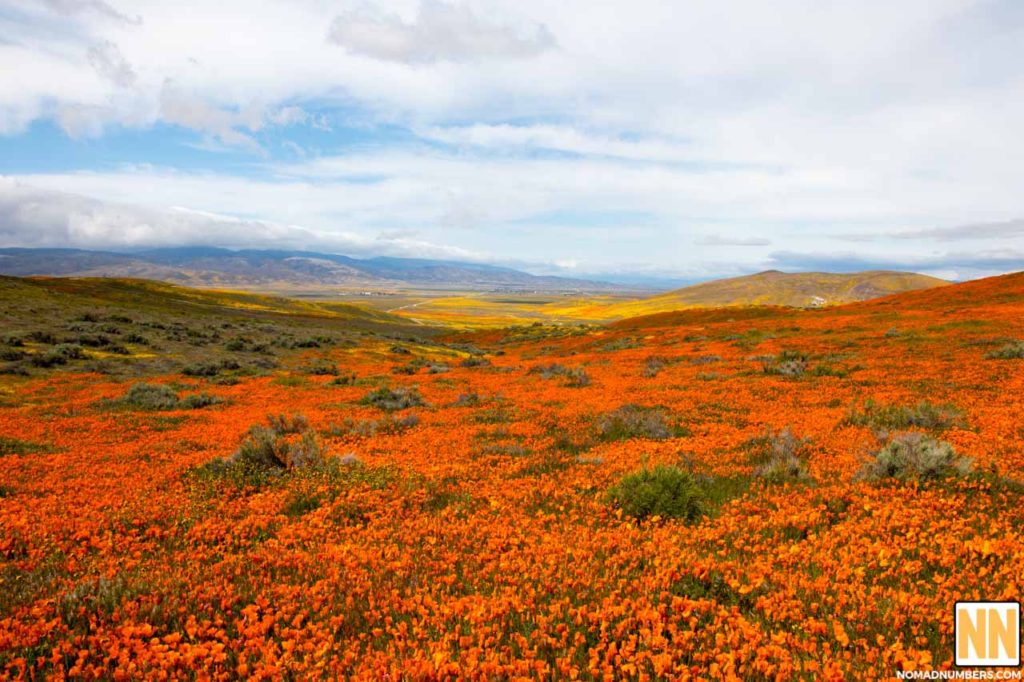
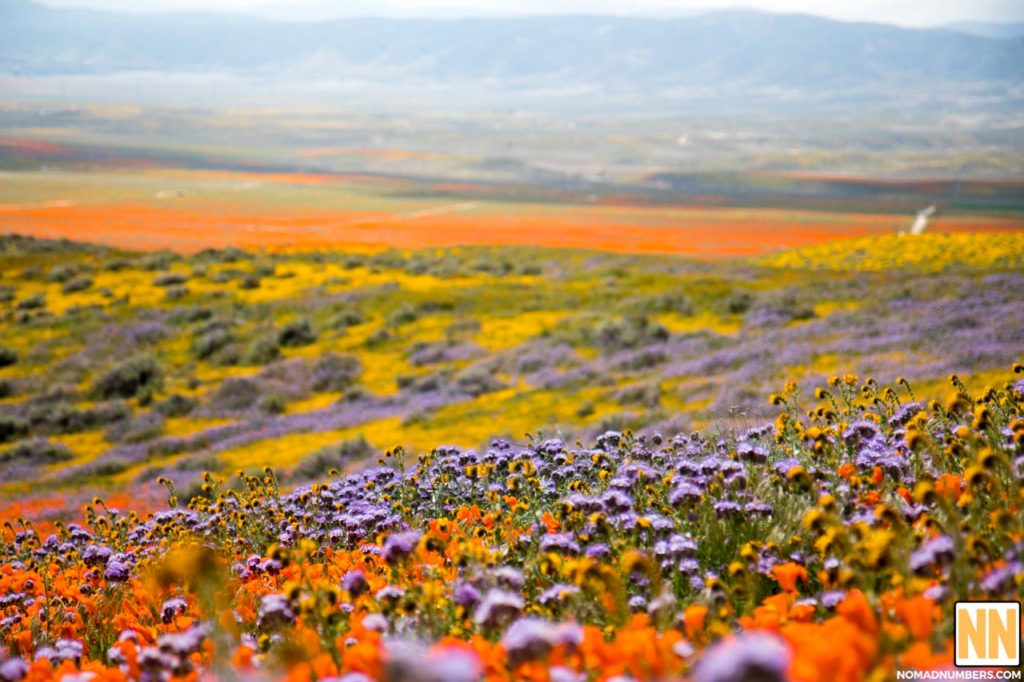
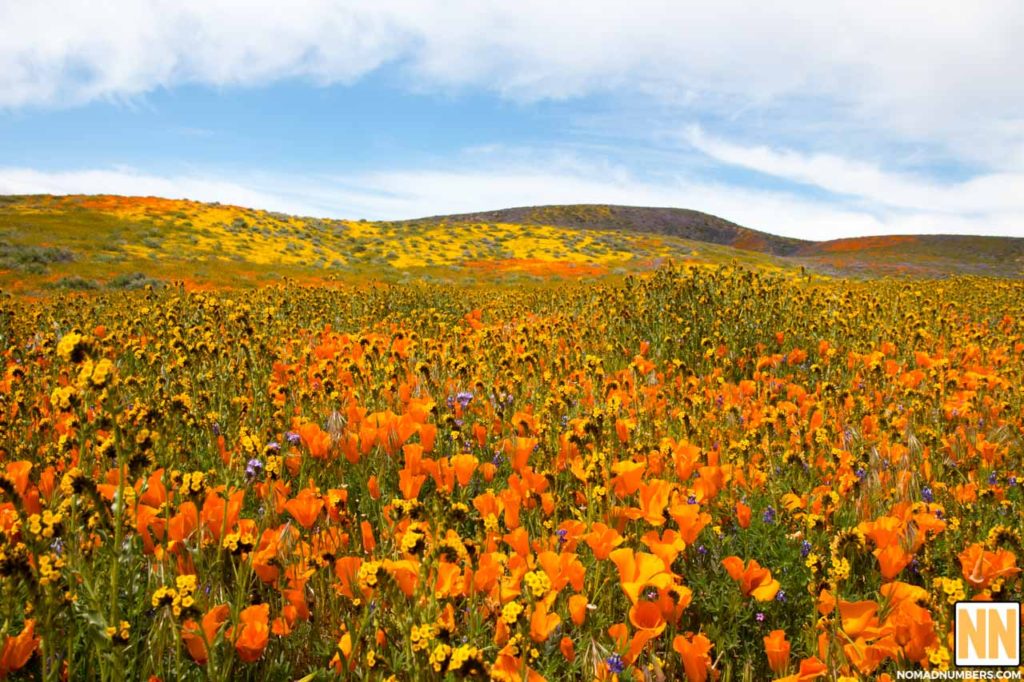
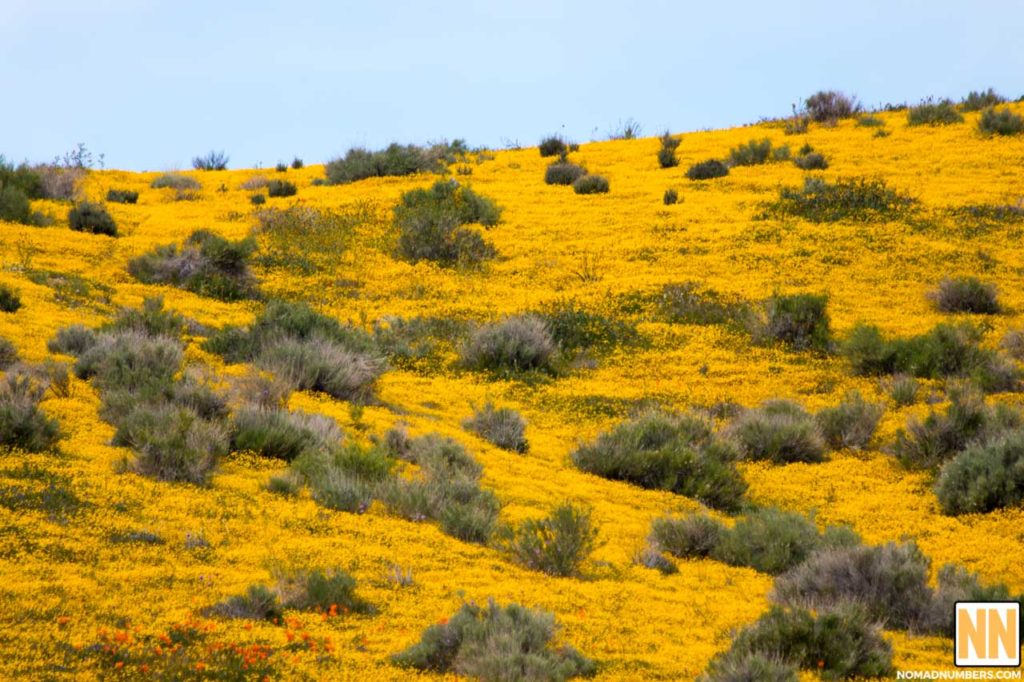
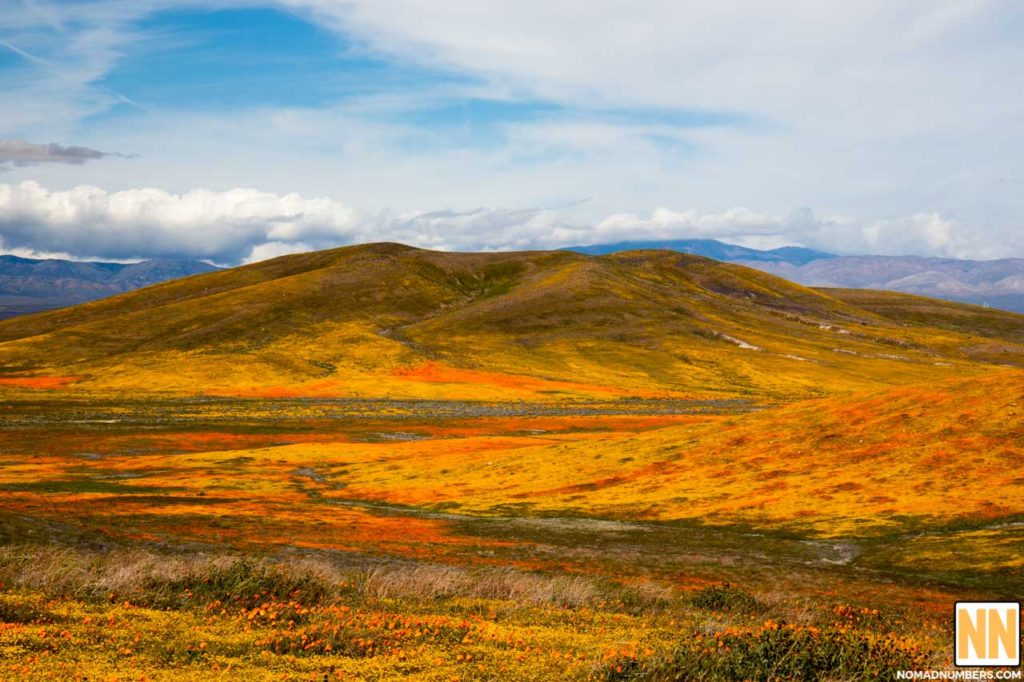
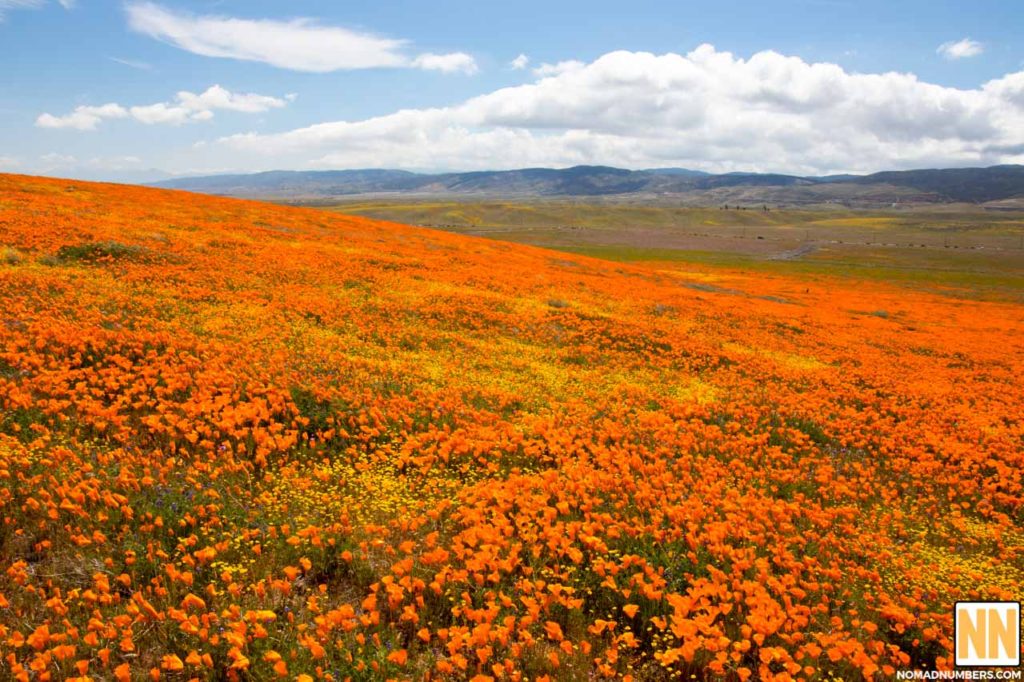
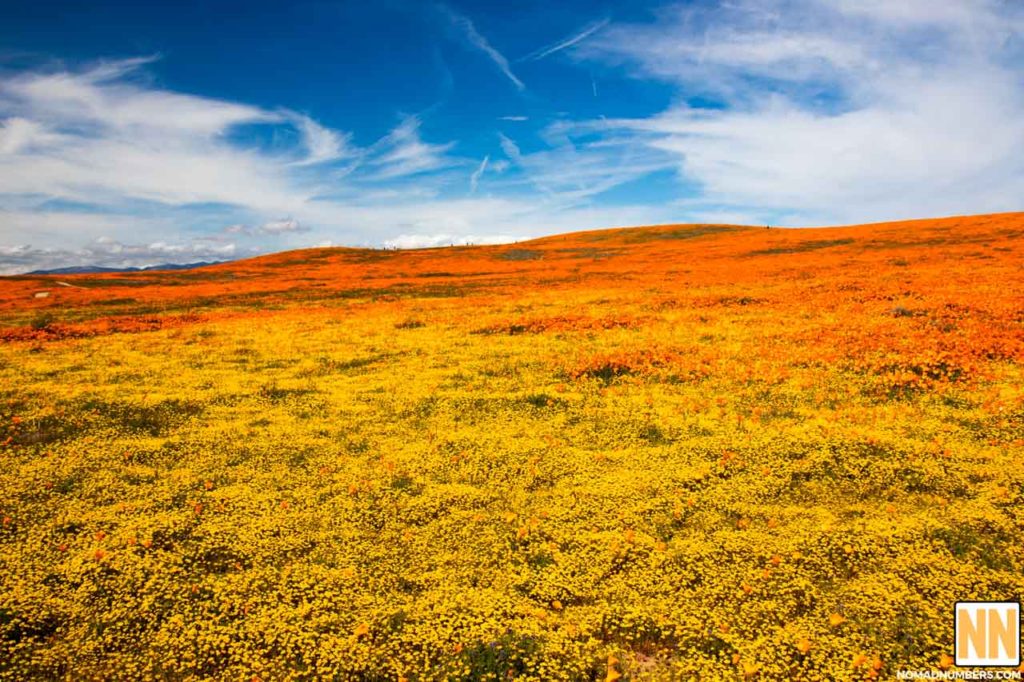
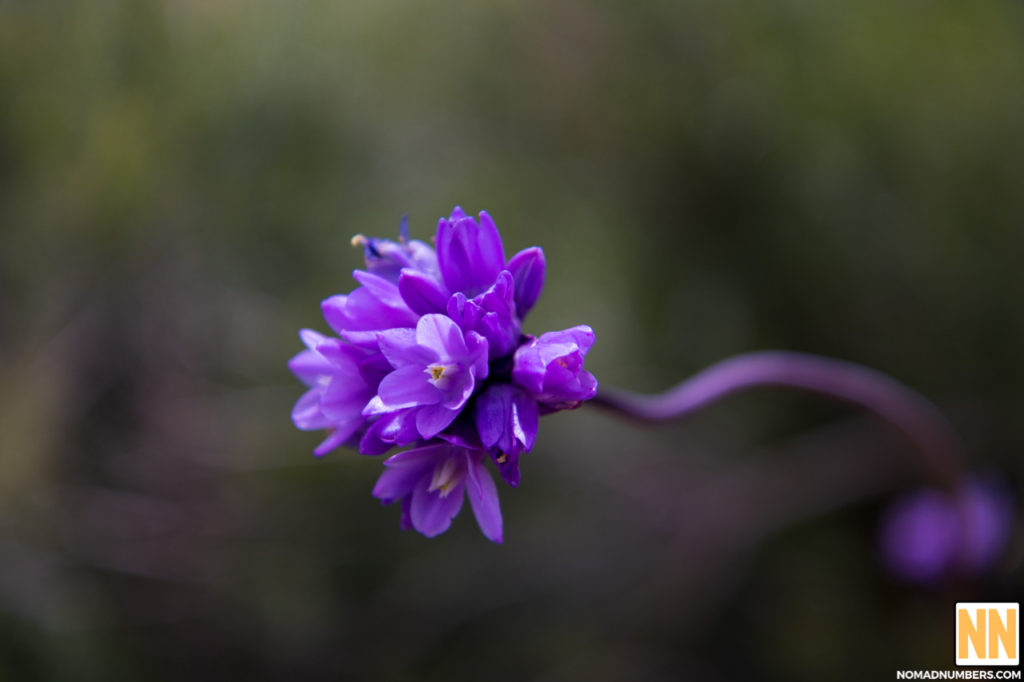
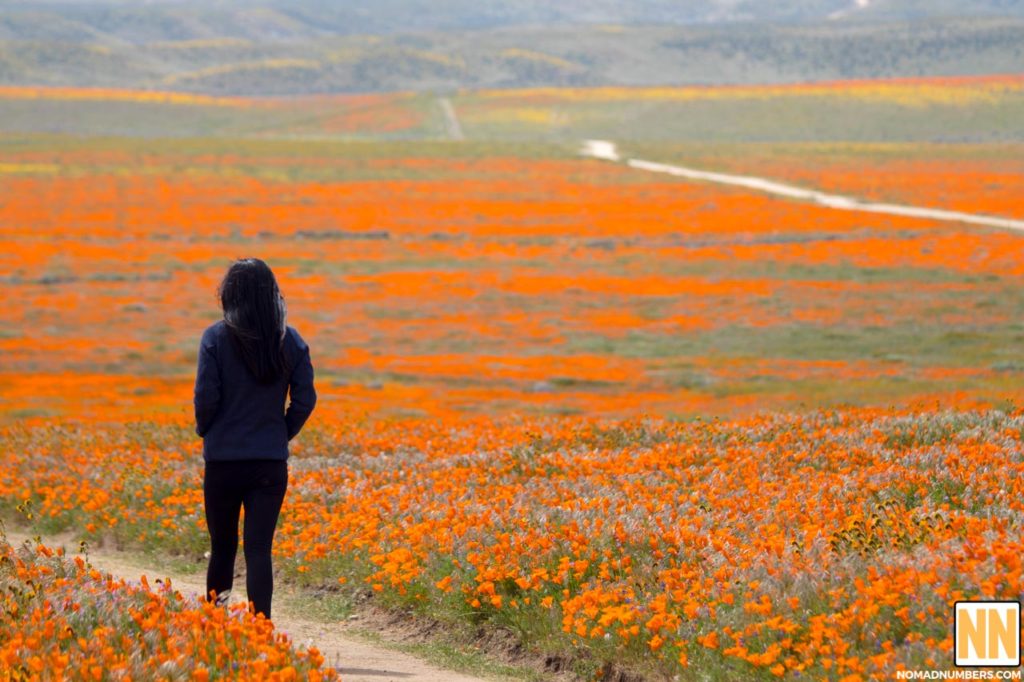

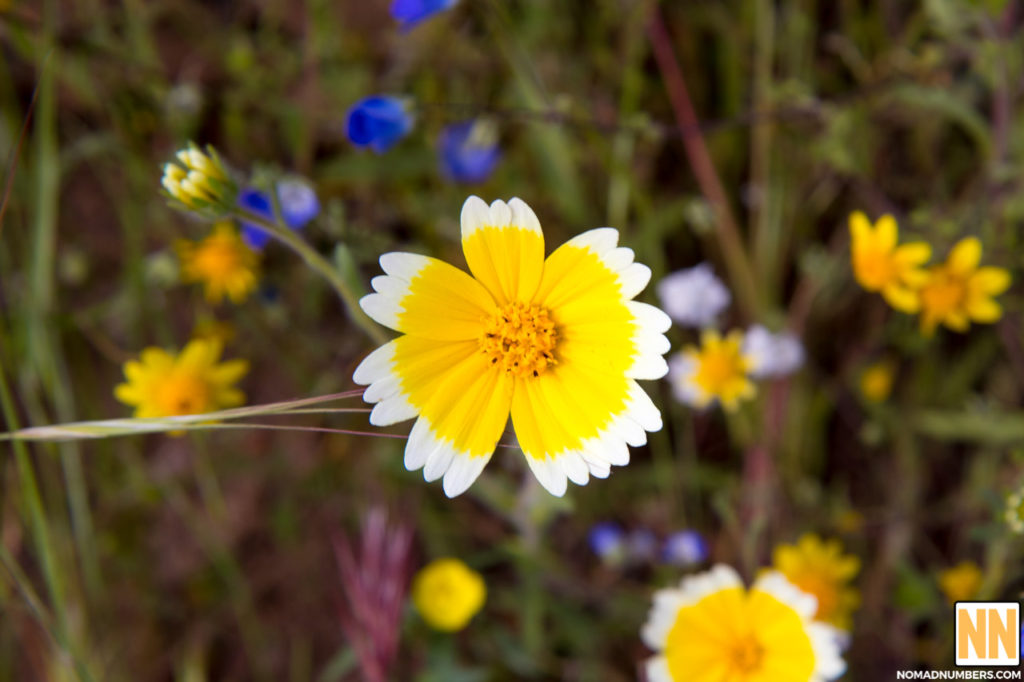

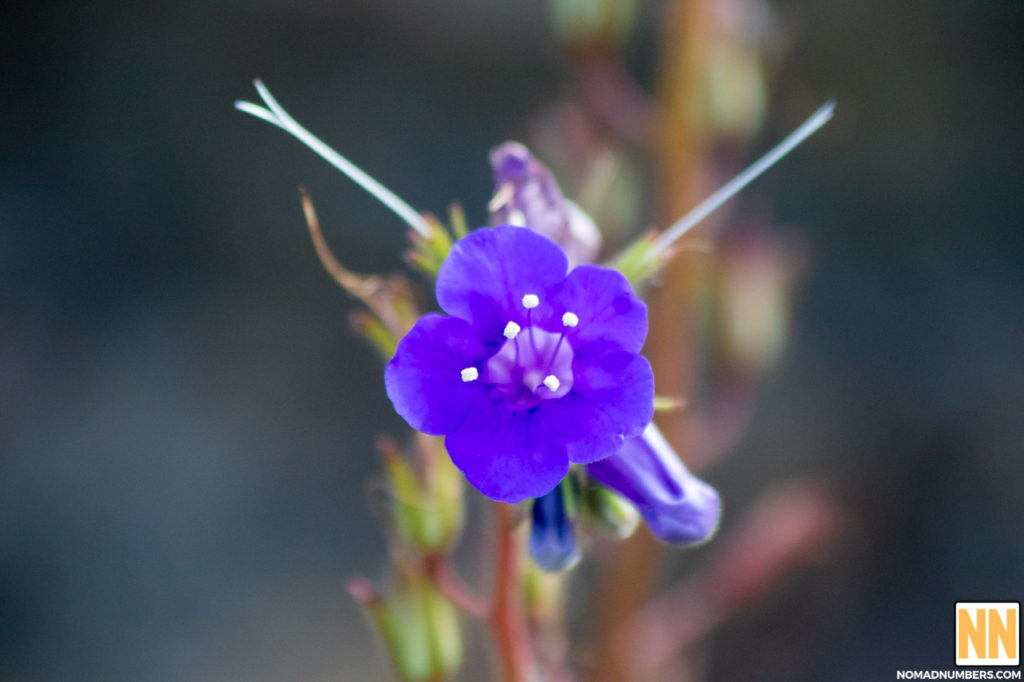
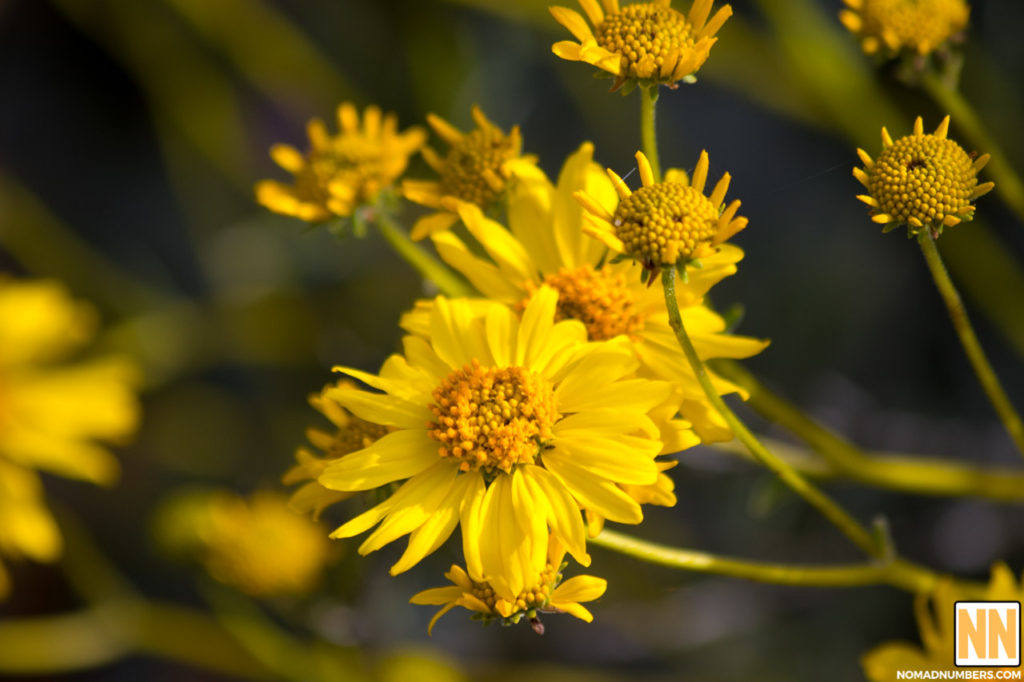
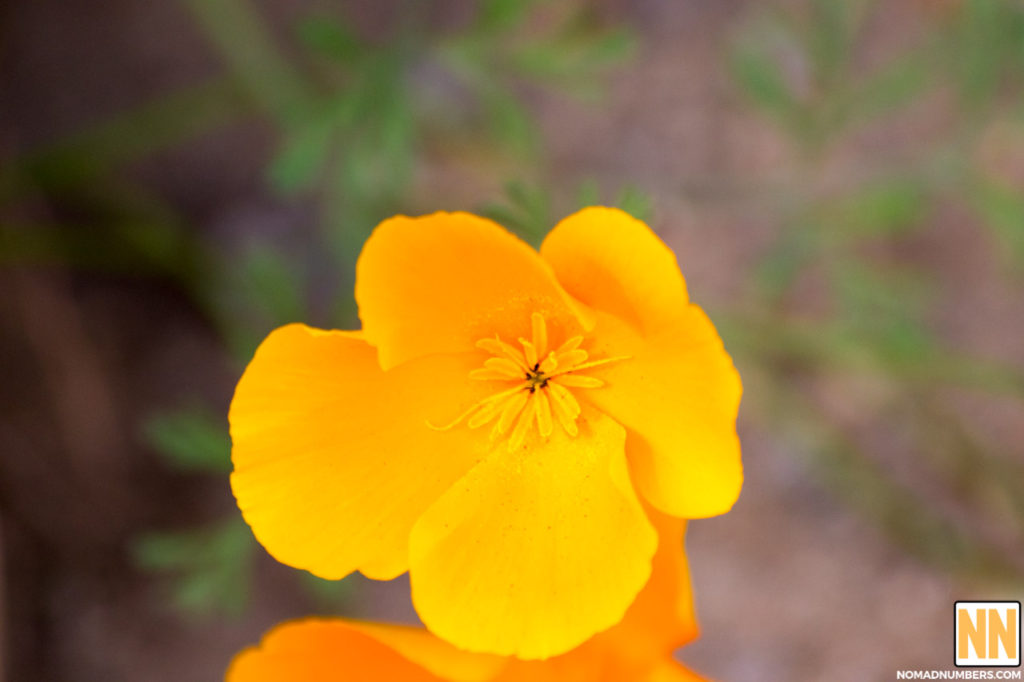
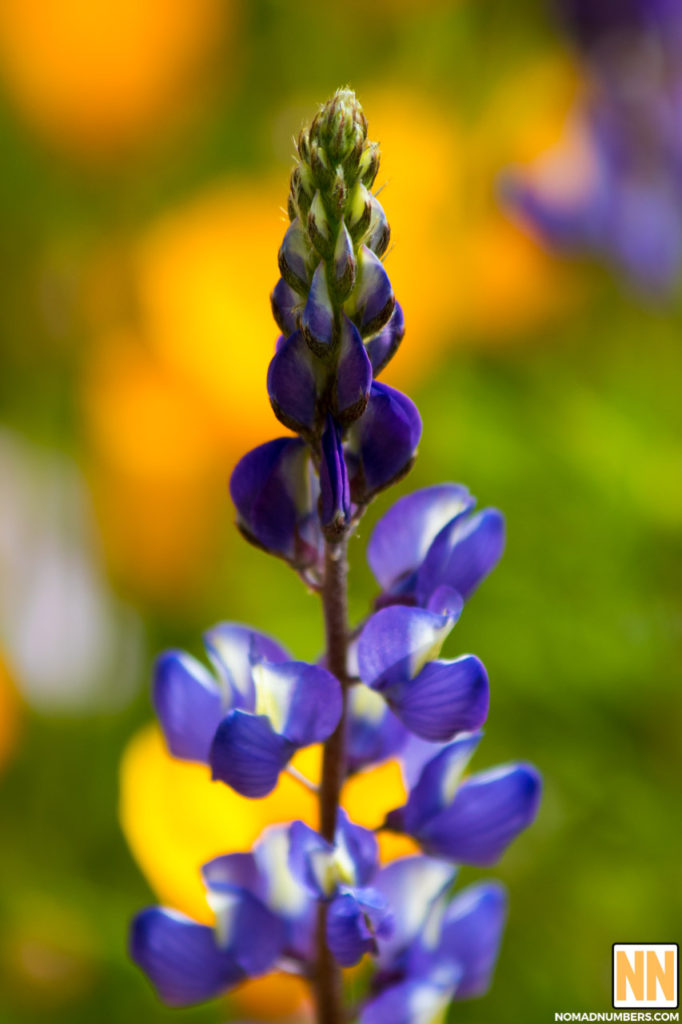
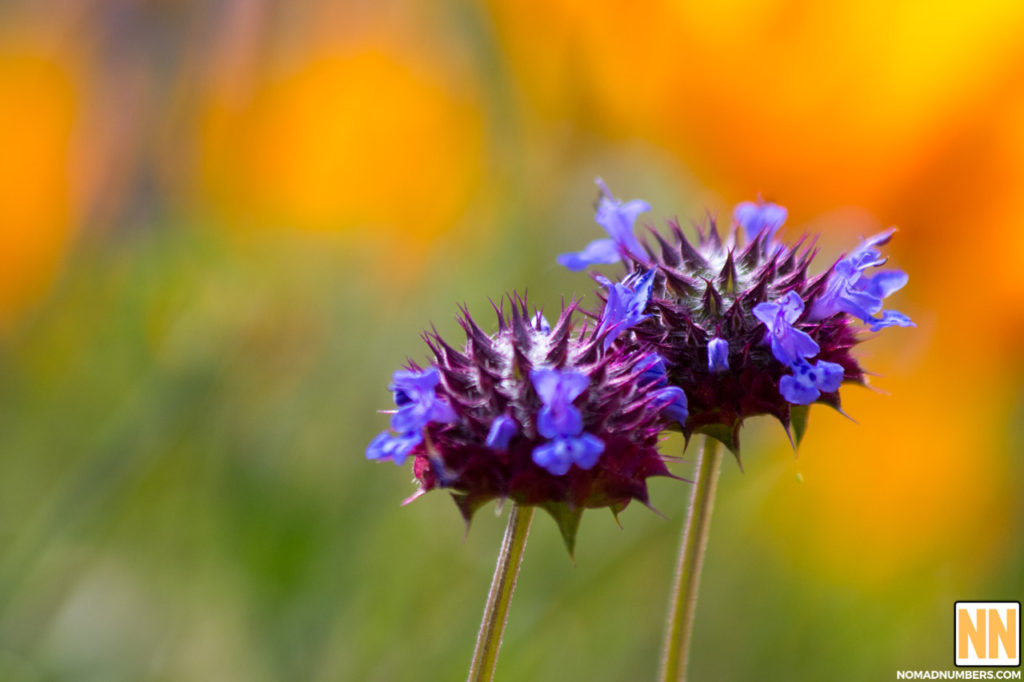
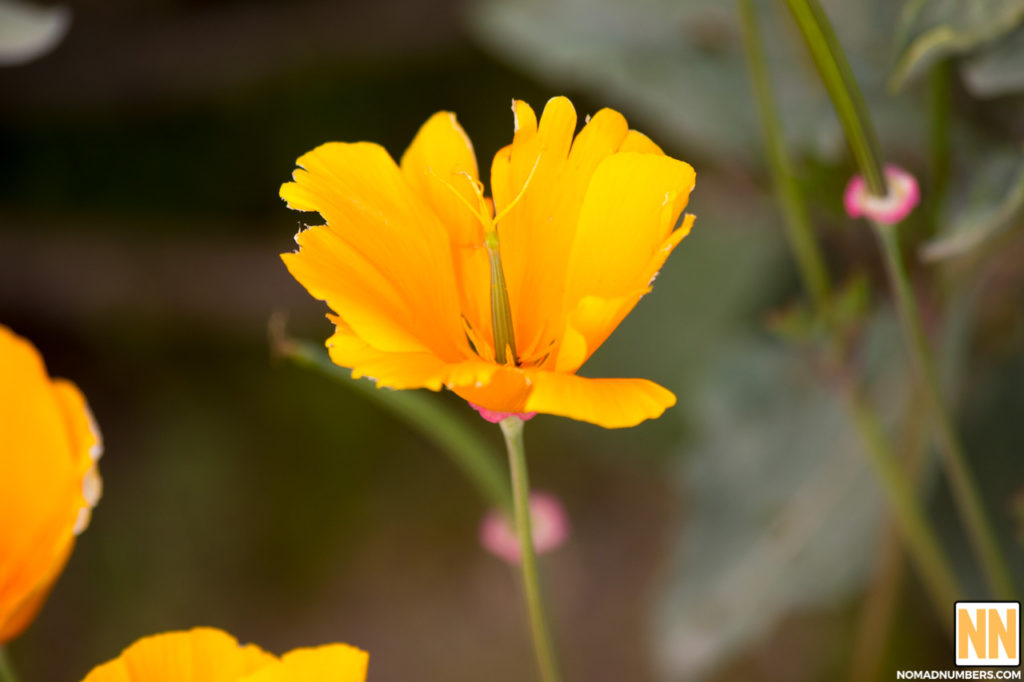
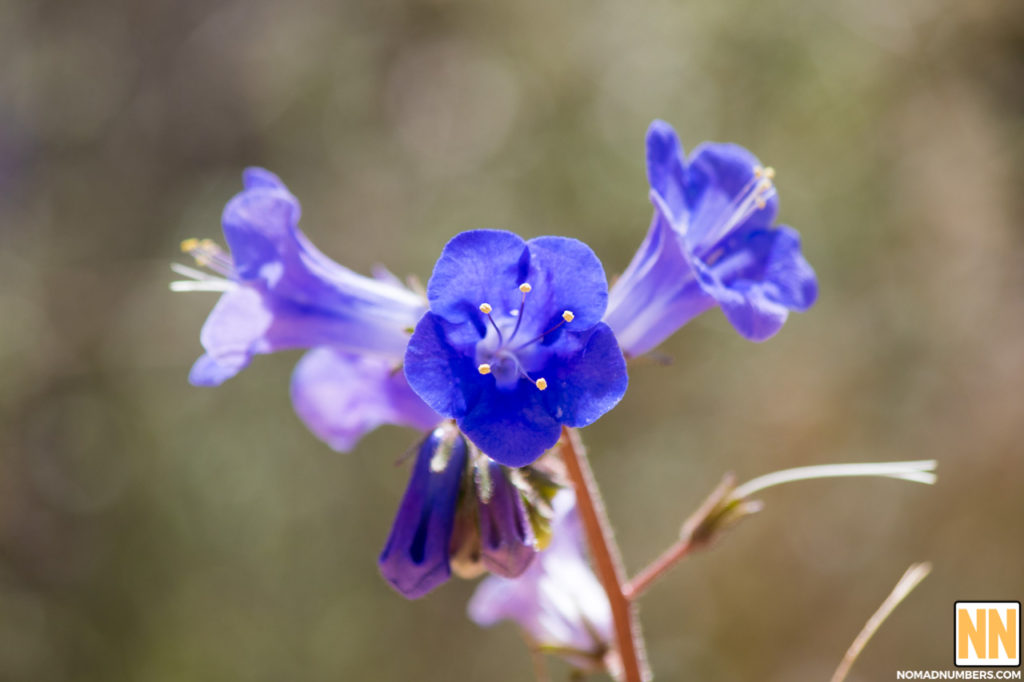
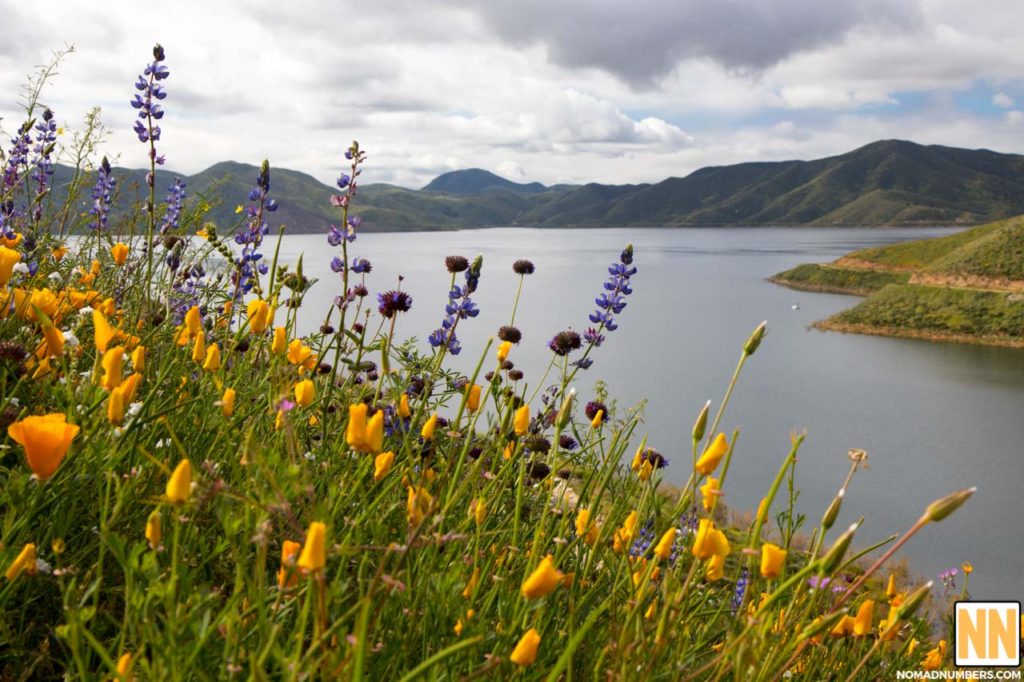






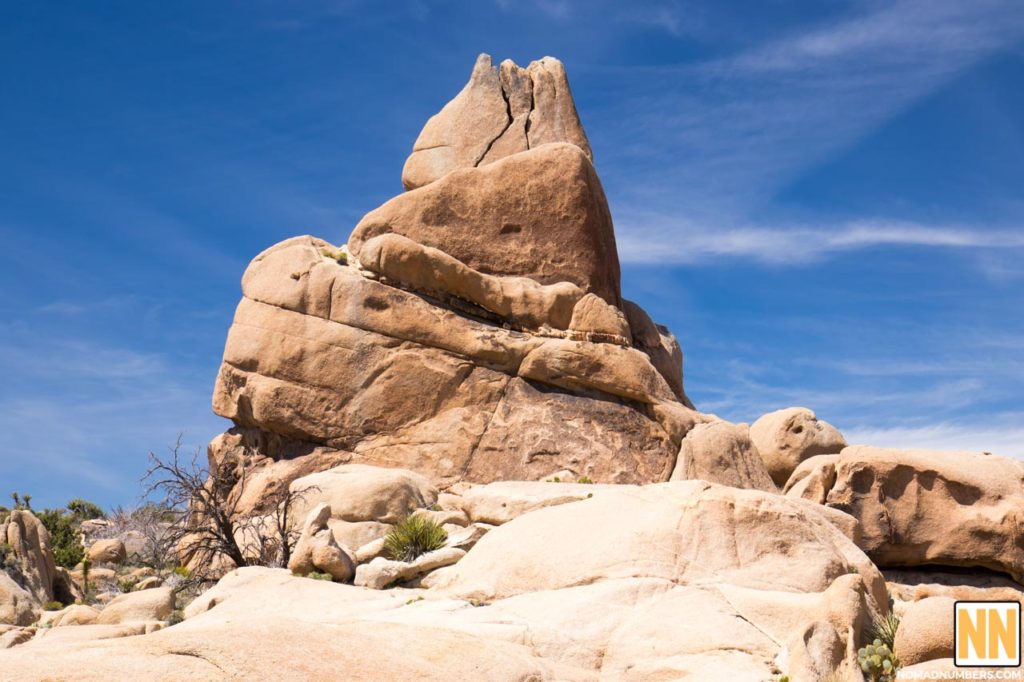
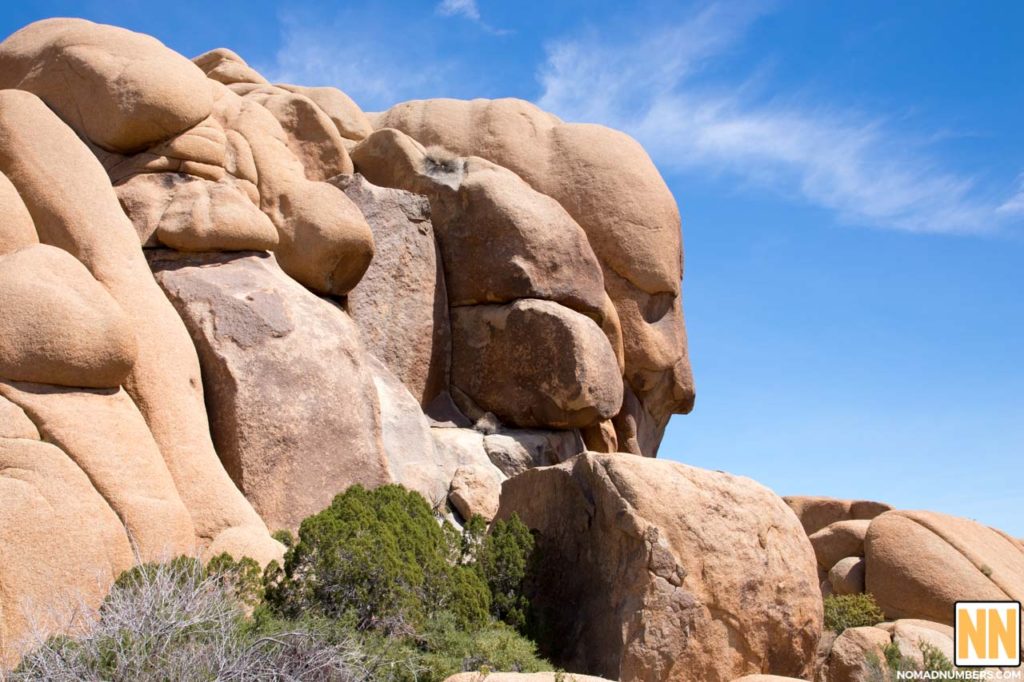
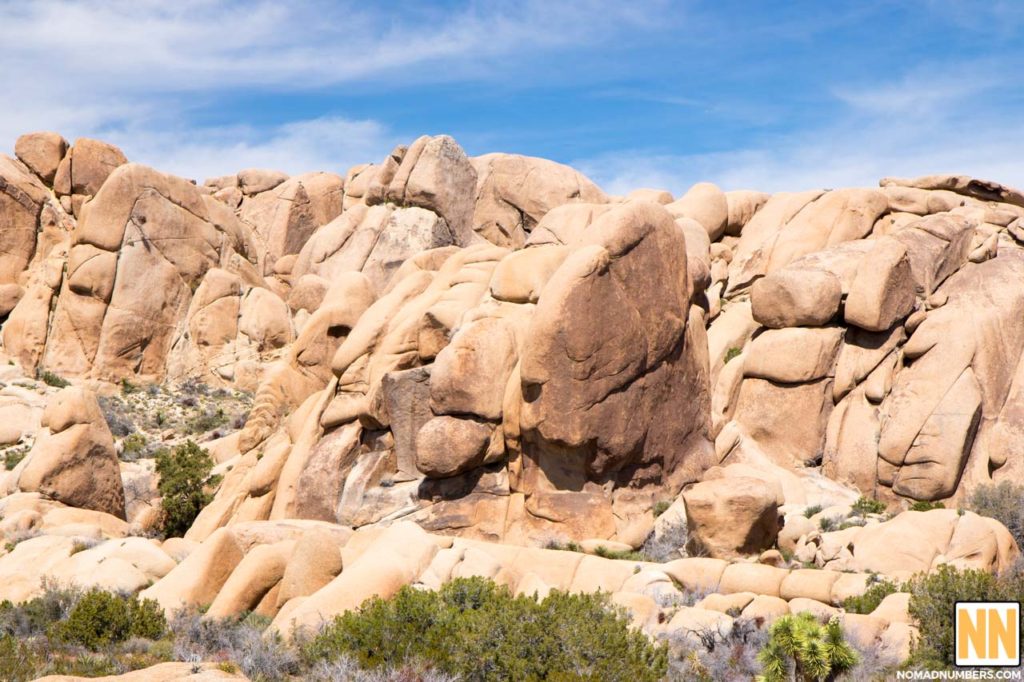
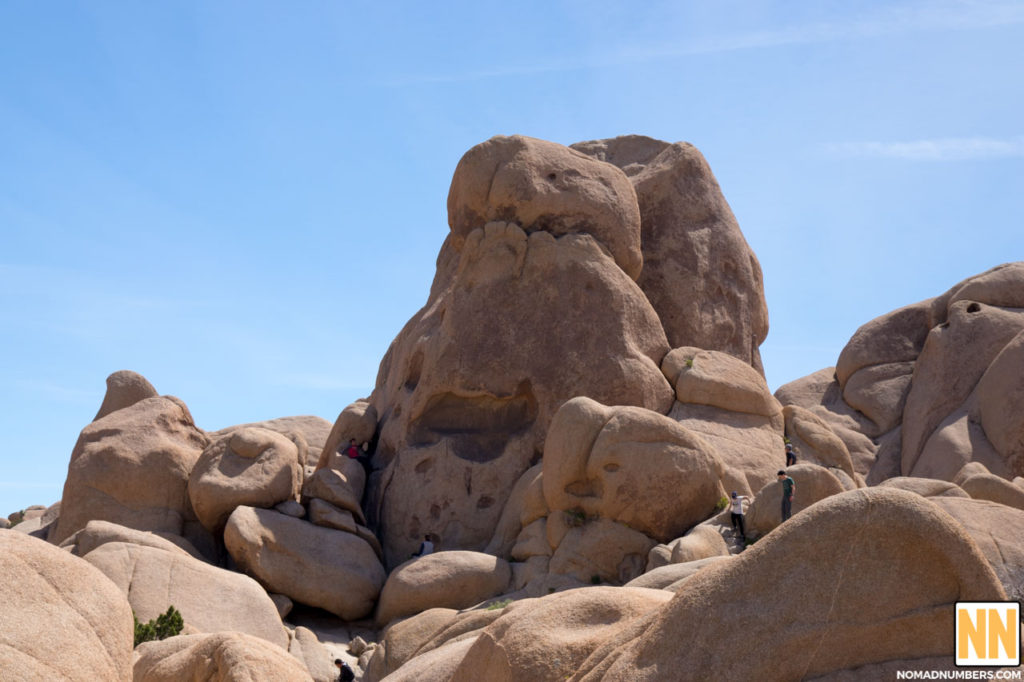
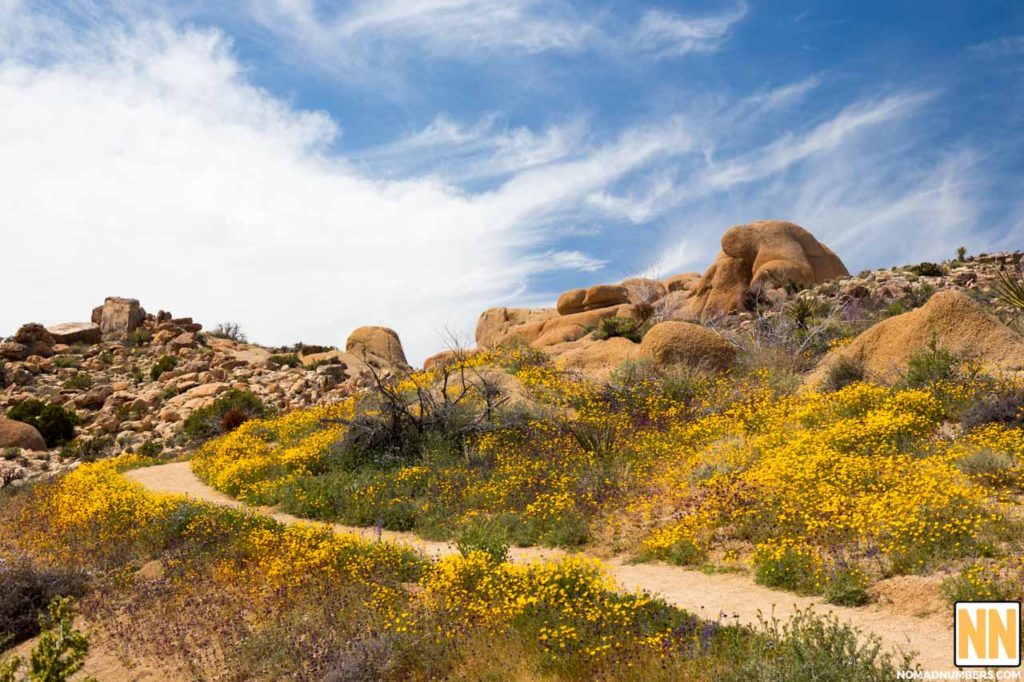
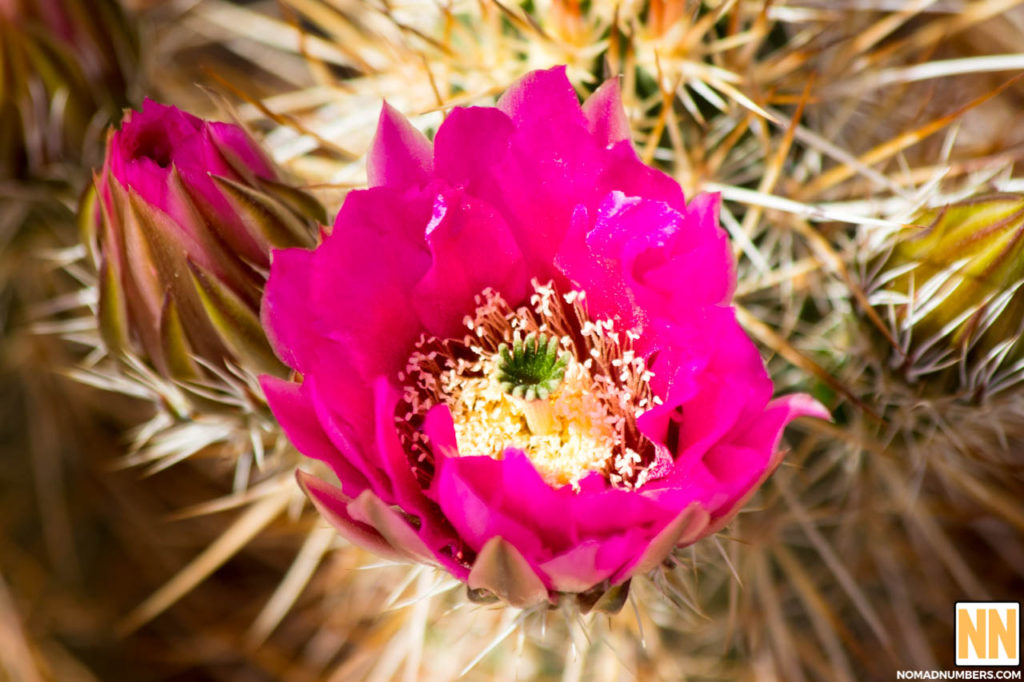
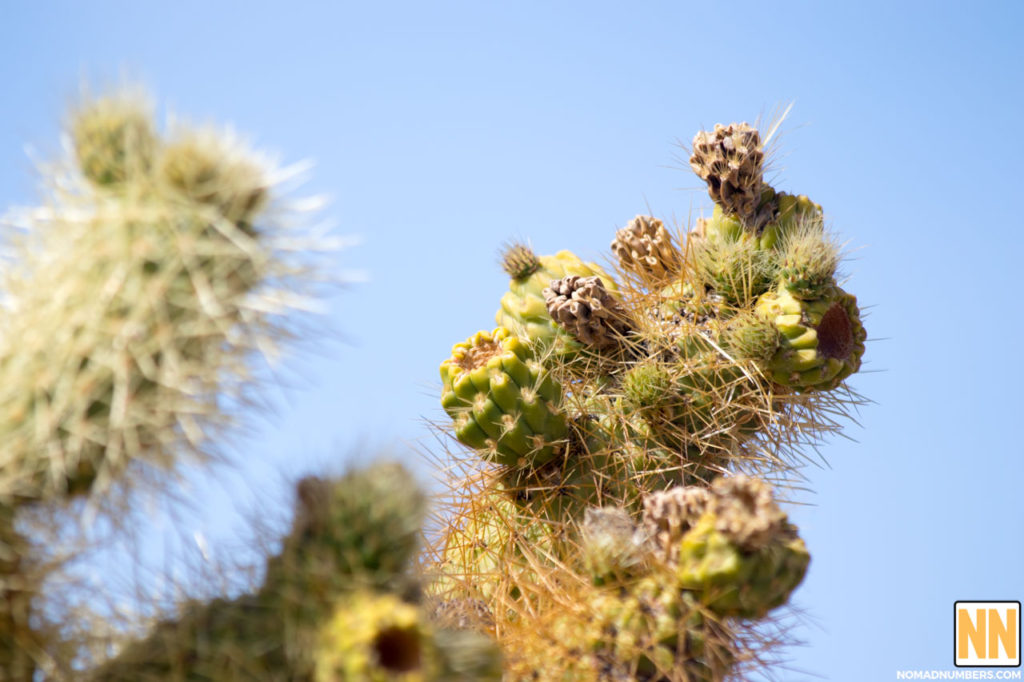
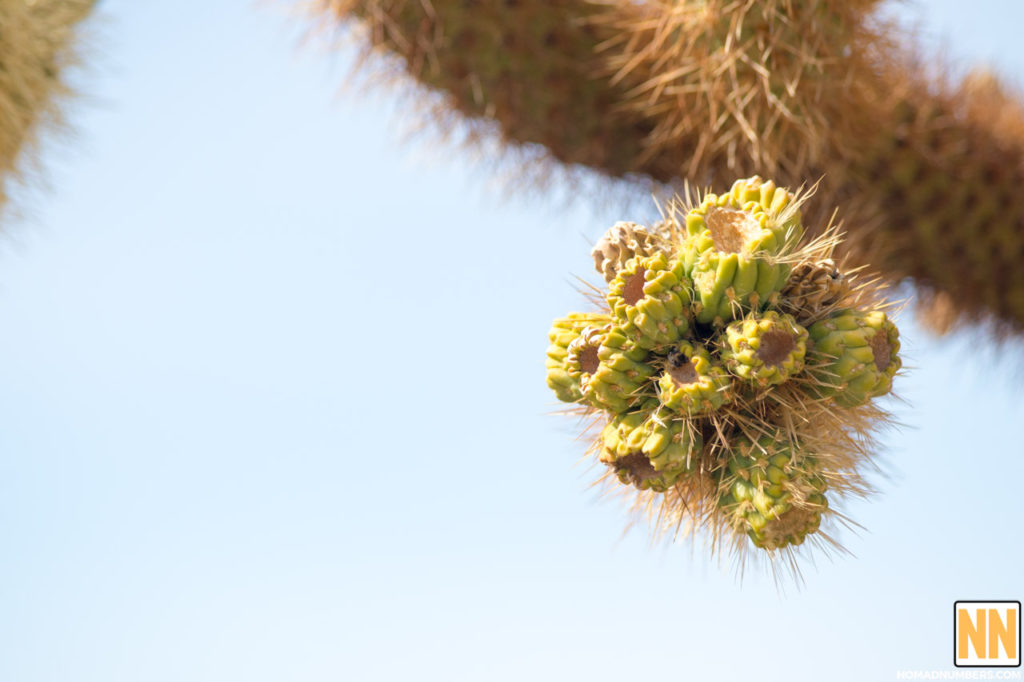
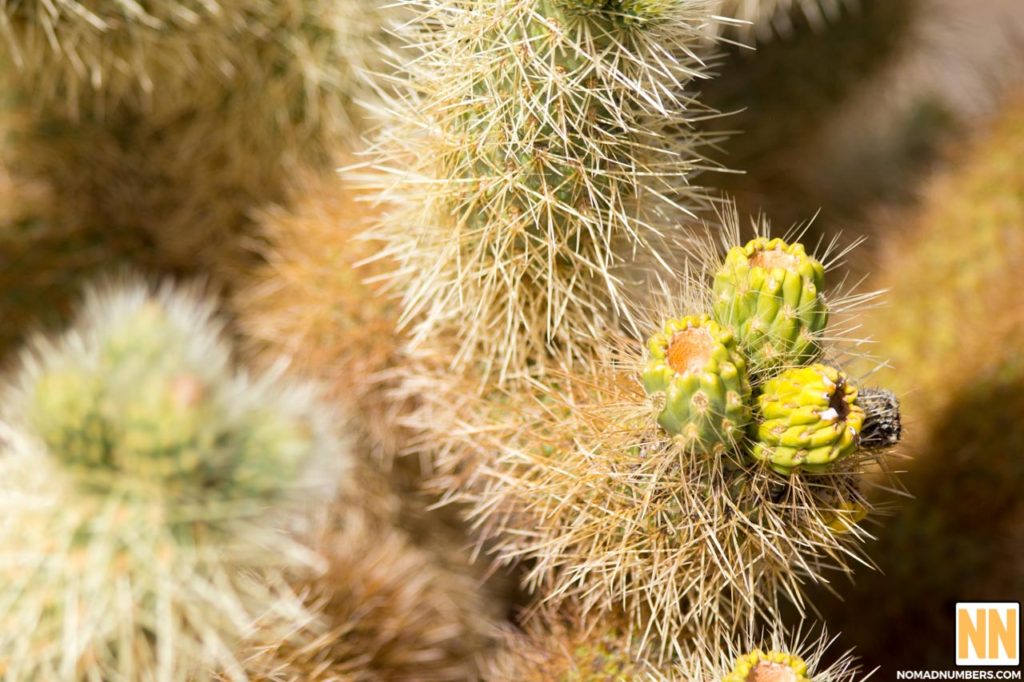












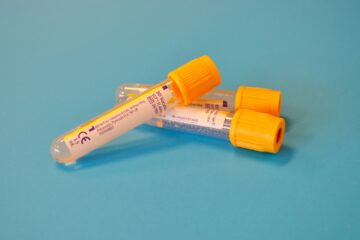

4 Comments
Life Outside The Maze · April 15, 2019 at 8:50 am
I have to confess I had never heard of a super bloom prior to this post. It looks amazing. Too bad no drones aloud, it would have been some crazy colorful footage
Mr. Nomad Numbers · April 15, 2019 at 8:51 pm
While drone were not allowed is most places we visited, we were able to pull on the side of one road which (which was away from people and restricted airspace) to collect some footage that made it to the video that I just added at the top of the article. Take a look and let me know what you think. I think aerial footage add a different perspective to this unique wildflower show, isn’t it?
Eniee · April 15, 2019 at 11:13 pm
I love this post because it’s so close to home!
Mr. Nomad Numbers · April 16, 2019 at 1:36 am
Thank you Eniee! If it’s close to where you live, I hope you will have the chance to check out the superbloom until it’s gone.